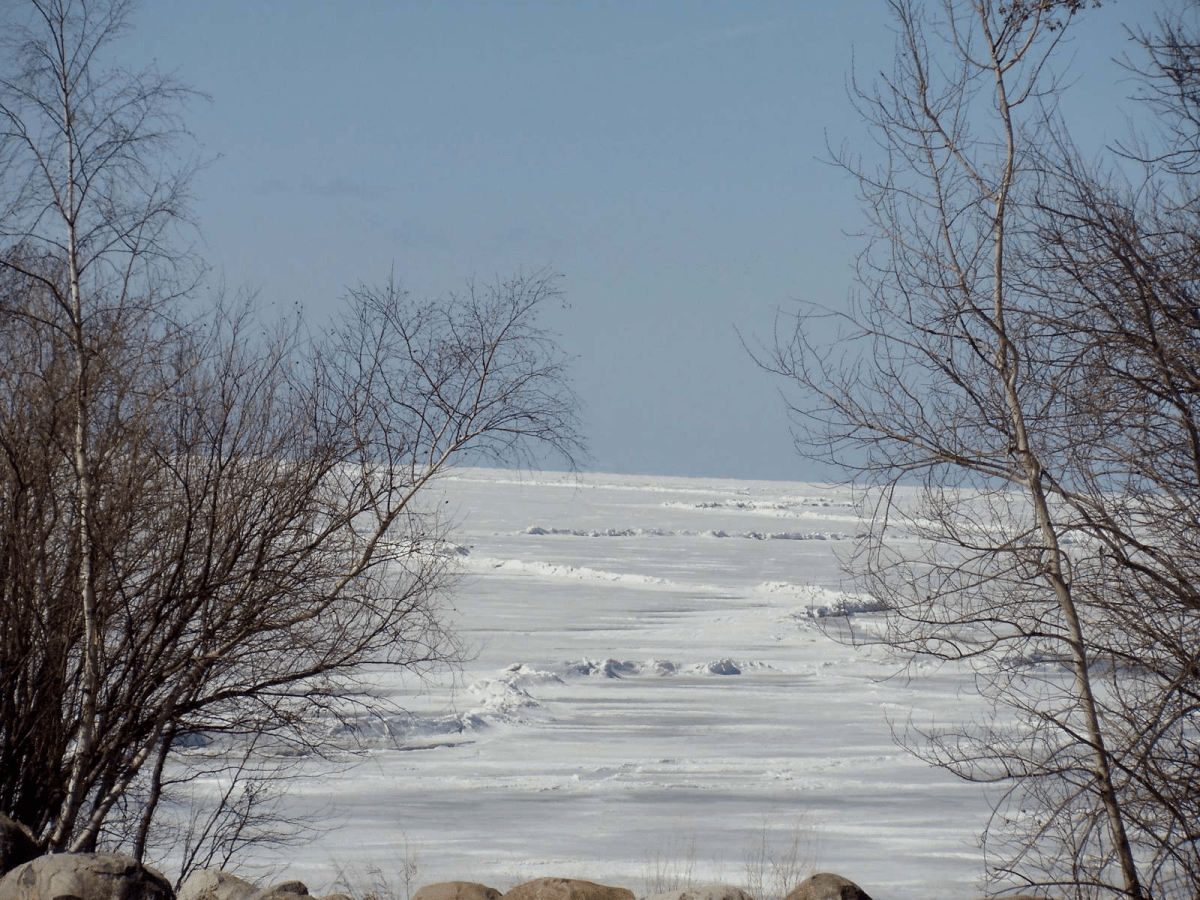If you were in the Grand Beach area Wednesday afternoon, you may have felt something that seemed like a brief earthquake. According to local residents, it’s something a lot more common, and it’s been happening for years.

Local resident Randy Gunn told 680 CJOB he was in his house when he felt shaking around 1 p.m. Wednesday.
“It might last about five to six seconds or so, but it’s enough that you can almost feel it rumbling and then when it hits your house, you can feel everything start to shake,” said Gunn.
“It’s almost like an earthquake… not that I’ve experienced one before.
“You don’t really feel it coming until it’s almost at your place. It basically just shakes everything… stuff in your house starts rattling and shaking for that split couple of seconds.”
According to Environment and Climate Change Canada, it’s likely Wednesday’s rumbling was caused by a phenomenon known as an ice heave or a pressure ridge — caused by ice on the water expanding and contracting, sometimes leaving a straight or jagged crack in the ice.
It’s caused, in part, by changes in temperature — something Manitoba experienced a lot of in the fall, including a record-breaking October snowstorm and a number of above-seasonal days.
An ice ridge is a slightly different weather event than a cryoseism — more commonly known as an “ice quake” — which is an event that can happen when water in the soil is affected by a drop in temperature and causes a sudden cracking action.
Gunn said he’s lived in the area since 2007 and that he’s used to the phenomena by now, but it was a little surprising at first.
“When we first experienced it, it kind of freaked us out a little bit in that we didn’t know what it was,” he said.
“Shortly after we felt it, we went down to the lake and these cracks in the ice, you can see them, and/or a bit of an ice ridge, and you kind of put it together that that’s exactly what it was — it’s a shifting of the ice from the water underneath.”
- Posters promoting ‘Steal From Loblaws Day’ are circulating. How did we get here?
- Canadian food banks are on the brink: ‘This is not a sustainable situation’
- Video shows Ontario police sharing Trudeau’s location with protester, investigation launched
- Solar eclipse eye damage: More than 160 cases reported in Ontario, Quebec
Gunn wasn’t the only person who felt the effects of Wednesday’s rumbling.
A number of 680 CJOB listeners called and texted their own experiences with the incident, including a fisherman who was on Lake Winnipeg when it happened.
“Usually you can hear the ice shifting/cracking, etc., but no warning yesterday. All of sudden myself and the guys I was fishing with were jolted sideways.
“The ice is almost three feet thick and when we headed for shore later in the day, it looked like the whole lake ice shelf moved in towards the shore as a huge crack/foot-tall ice shelf had formed.”
Environment Canada warning and preparedness meteorologist Natalie Hasell said if you encounter an ice ridge on a lake or river, it’s best to be cautious.
“You shouldn’t approach unless you have very good reason to believe it’s safe,” she said.
“Pay very close attention to the conditions. Check the ice thickness if you see signs of a crack, and stay away unless you’re absolutely sure.”









Comments